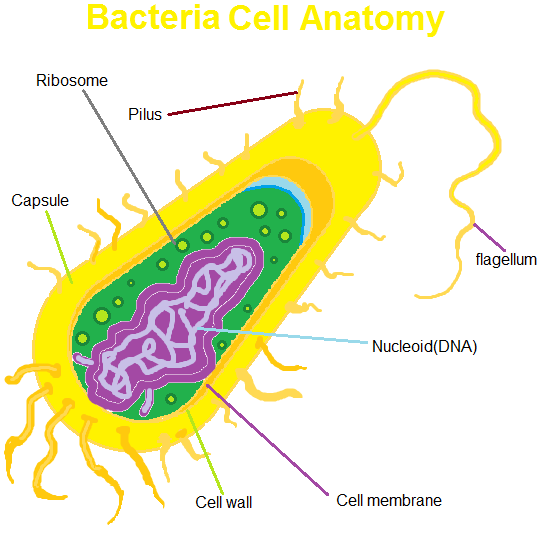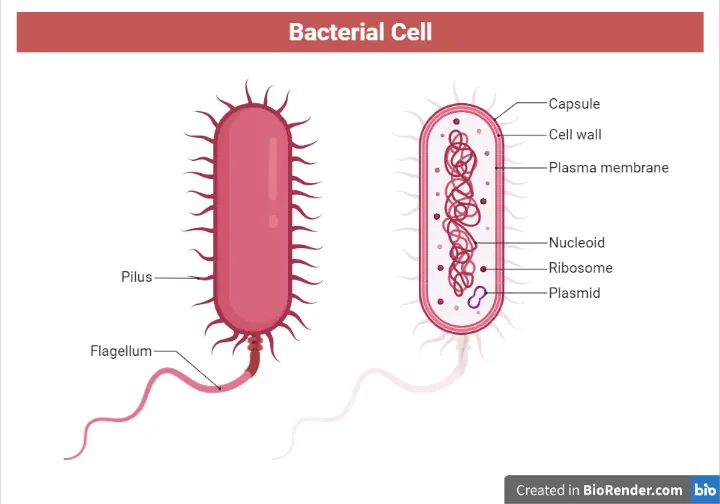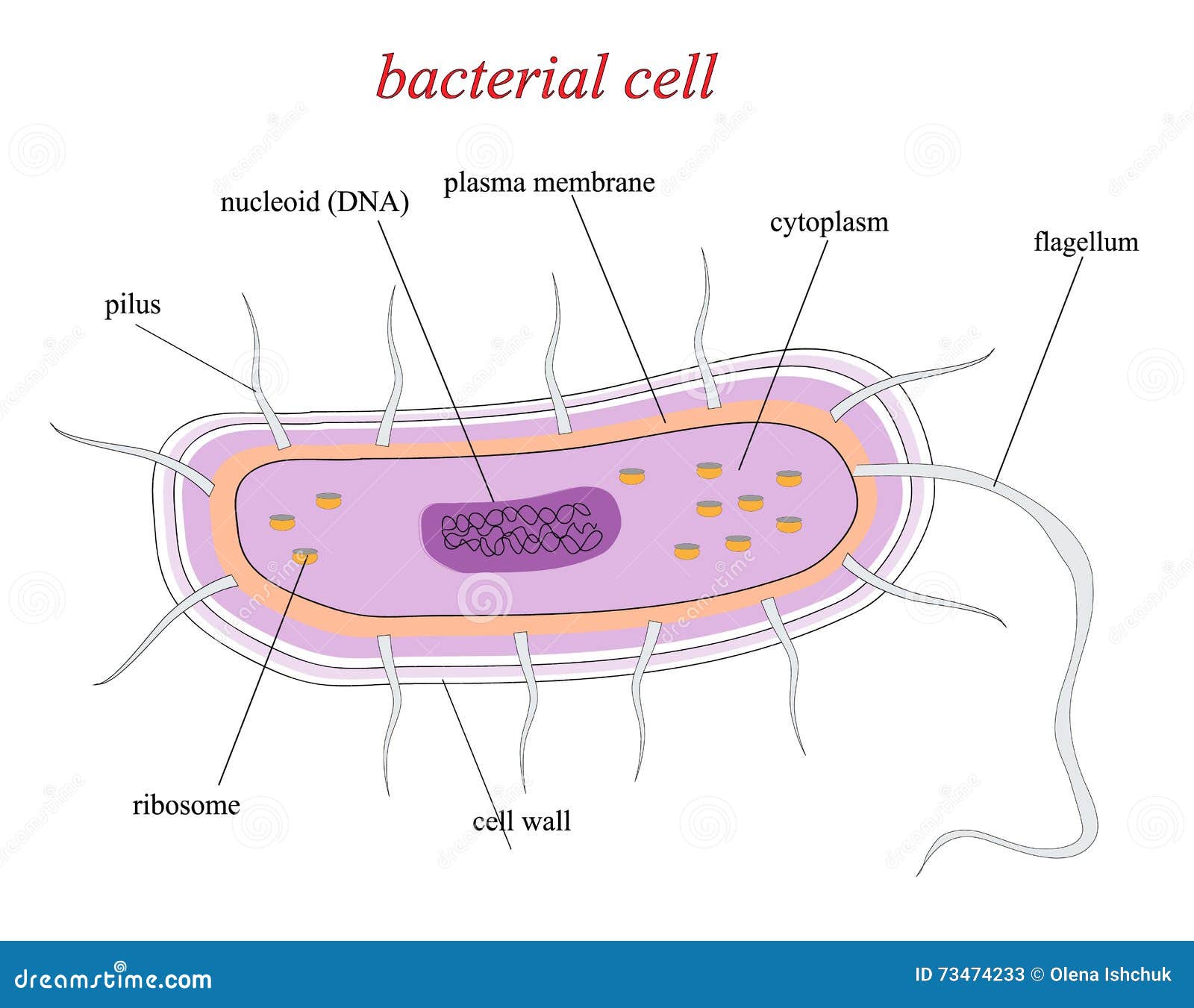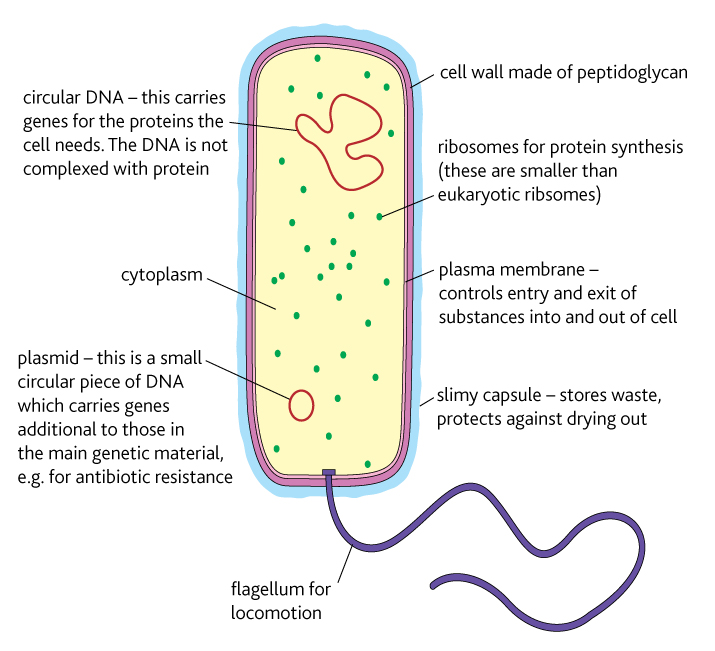
Types and Structure of Bacteria ScienceAid
Fimbriae Types Functions Bacterial Spore Sporulation Morphology of Spore Shape and Position of Spores Resistance Germination Key Points FAQs References and Sources: Bacteria are unicellular organisms with a simple structure. They are considered prokaryotes because of the absence of a well-formed nucleus.

Open Simple Bacteria Cell Diagram 2000x1772 PNG Download PNGkit
Gross Morphology Bacteria have characteristic shapes (cocci, rods, spirals, etc.) and often occur in characteristic aggregates (pairs, chains, tetrads, clusters, etc.). These traits are usually typical for a genus and are diagnostically useful. Cell Structure

Bacterial Structure Plantlet
Key points: Prokaryotes are single-celled organisms belonging to the domains Bacteria and Archaea. Prokaryotic cells are much smaller than eukaryotic cells, have no nucleus, and lack organelles. All prokaryotic cells are encased by a cell wall. Many also have a capsule or slime layer made of polysaccharide.

Structure of Bacterial Cells Archives • Microbe Online
A prokaryote is a simple, single-celled organism that lacks a nucleus and membrane-bound organelles.

Bacterial Cell Composition
Cell wall composition varies widely amongst bacteria and is one of the most important factors in bacterial species analysis and differentiation. For example, a relatively thick, meshlike structure that makes it possible to distinguish two basic types of bacteria.

Structure of a Bacterial Cell Stock Illustration Illustration of bacterium, bacillus 73474233
In this article we will discuss about the cell structure of bacteria with the help of diagrams. A bacterial cell (Fig. 2.5) shows a typical prokaryotic structure. The cytoplasm is enclosed by three layers, the outermost slime or capsule, the middle cell wall and inner cell membrane. The major cytoplasmic contents are nucleoid, plasmid, ribosome.

Simple Bacteria Cell Diagram
Bacteria Diagram The bacteria diagram given below represents the structure of a typical bacterial cell with its different parts. The cell wall, plasmid, cytoplasm and flagella are clearly marked in the diagram. Bacteria Diagram representing the Structure of Bacteria Ultrastructure of a Bacteria Cell

Innovic Medical Bacterial Cell Structure
bacteria, any of a group of microscopic single-celled organisms that live in enormous numbers in almost every environment on Earth, from deep-sea vents to deep below Earth's surface to the digestive tracts of humans. Bacteria lack a membrane-bound nucleus and other internal structures and are therefore ranked among the unicellular life-forms.

Bacterial Cell Diagrams 101 Diagrams
August 14, 2021 Bacteria are unicellular. Their structure is a very simple type. Bacteria are prokaryotes because they do not have a well-formed nucleus. A typical bacterial cell is structurally very similar to a plant cell. The cell structure of a bacterial cell consists of a complex membrane and membrane-bound protoplast.

Bacterial cell structure Year 12 Human Biology
Bacteria Diagram with Labels Bacterial cells have simpler internal structures like Pilus (plural Pili), Cytoplasm, Ribosomes, Capsule, Cell Wall, Plasma membrane, Plasmid, Nucleoid, Flagellum, etc. Labeled Bacteria diagram Eukaryotes have been shown to be more recently evolved than prokaryotic microorganisms.

bacteria cell labeled simple
DNA in a nucleus. Plasmids are found in a few simple eukaryotic organisms. Prokaryotic cell (bacterial cell) DNA is a single molecule, found free in the cytoplasm. Additional DNA is found on one.

Bacteria Definition & Characteristics With Examples & Diagram CAF
Nucleus: The single circular double-stranded chromosome is the bacterial genome. Other structures include cytoplasmic membrane, mesosomes, ribosomes and cytoplasmic inclusions. Unlike eukaryotes cytoplasm does not contain ribosome, Golgi, cytoskeleton. Related Articles: Structure of Bacteria (With Diagram) | Microbiology

Bacterial Cell Structure and Function
Bacillus (pl. bacilli) - a bacillus is a rod-shaped cell. Curved rods - obviously this is a rod with some type of curvature. There are three sub-categories: the vibrio, which are rods with a single curve and the spirilla / spirochetes, which are rods that form spiral shapes.

Bacteria Diagram
How Big is a Bacteria. Bacteria cells are typically 0.5-5.0 µm in length. Among the smallest bacteria are members of the genus Mycoplasma, which measure only 0.2-0.3 µm, while a few others are so big that they are visible even to the naked eye.For example, Thiomargarita namibiensis is the largest and longest bacteria with a diameter of 100-300 µm (0.1-0.3 mm).

Bacterial cell anatomy in flat style. Vector modern illustration. Labeling structures on a
Distinguish a typical bacterial cell from a typical plant or animal cell in terms of cell shapes and arrangements, size, and cell structures Discuss the factors that determine the size and shape of a bacterial cell. Bacterial and Archaea Structure and Function Prokaryotes differ from eukaryotes in size and simplicity

Structure of a Bacterial Cell (Part 1) YouTube
Size of Bacteria. Bacteria are single-celled organisms. This means that each bacterium is made up of only one cell. This is very different from humans. Our bodies are made up of trillions of cells . Bacteria are much smaller than human cells. Bacterial cells are between about 1 and 10 μm long.